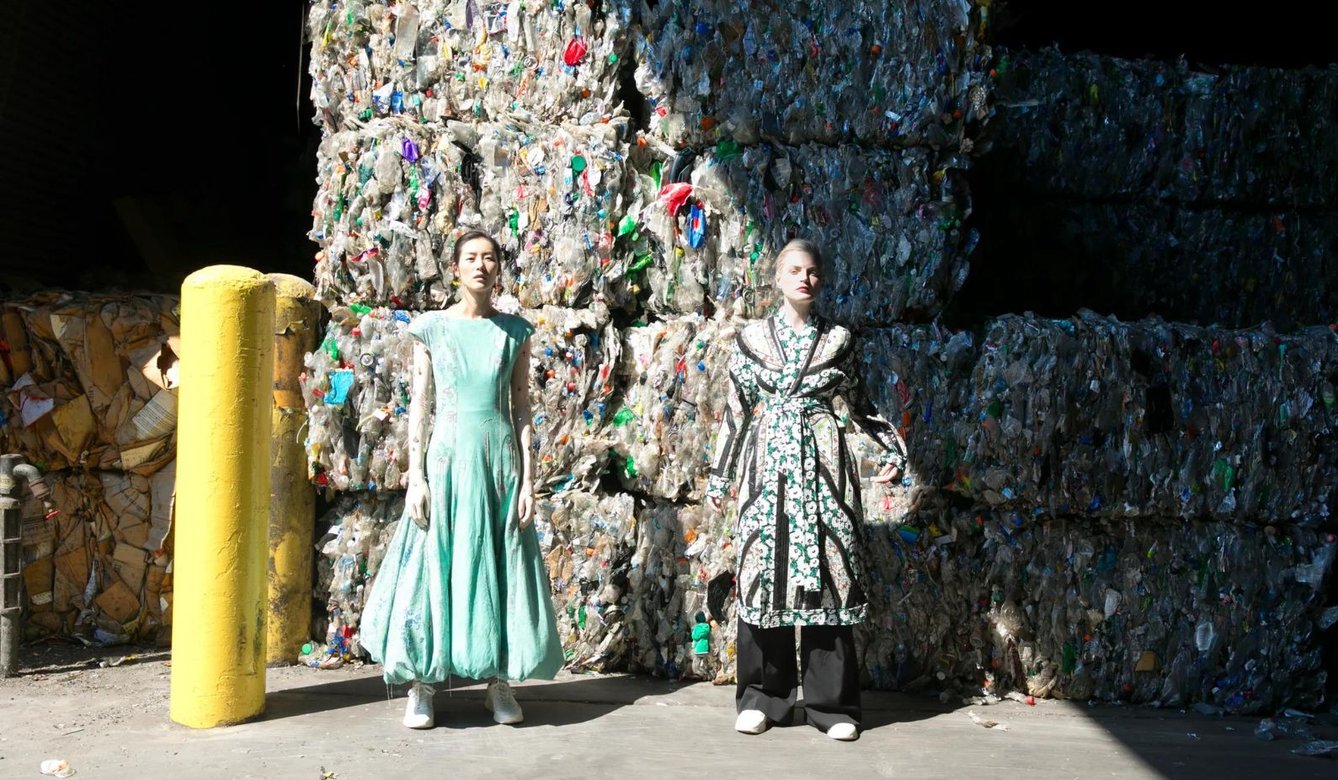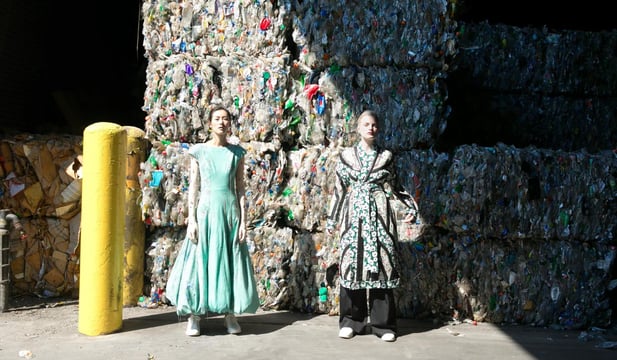Second-Hand retail: Shifting Consumer Trends & Strategy

Second-Hand retail: Shifting Consumer Trends & Strategy
The quick rise of the second-hand market within the retail industry owes itself to a
significant shift in consumer behavior.
While this trend embodies commendable values and principles, its effective implementation poses a significant challenge for retail strategists across various industries.
The question remains: how can this trend be translated into actionable in-store strategies?
THE CURRENT LANDSCAPE
The second-hand market, boasting a staggering valuation of 105 billion euros worldwide, has emerged as a prominent economic force, particularly within the fashion sector, experiencing notable growth since 2020. Fueled by both economic challenges and ecological imperatives, this surge reflects consumers' inclination towards a circular economy—a greener, more ethical, and sustainable model. This booming trend towards pre-owned goods not only signifies a shift in consumer behavior but also unravels a many untapped opportunities for brands, creators, and entrepreneurs.
Embracing this movement becomes imperative for businesses seeking to stay competitive in an evolving market landscape.
However, this surge in the second-hand market is increasingly slipping away from traditional retail players as it is undoubtedly intertwined with the expansion of e-commerce. Online platforms have taken hold of the market, leaving merchants without the expertise out in the cold. Therefore, it's becoming vital for them to seize the opportunity to harness the vast potential of this future market.
BRANDS' SUSTAINABLE LEAP INTO SECOND-HAND MARKETS
In a bid to embrace sustainability and cater to evolving consumer preferences, brands have embarked on a transformative journey into the world of second-hand fashion, employing innovative omnichannel strategies.
Kiabi, for instance, has introduced a unique program allowing customers to sell their pre-owned, multi-brand clothes for a percentage per item. These pre-loved pieces find new life in dedicated second-hand corners within Kiabi stores. Ambitiously, Kiabi aims to incorporate second-hand corners across all its French, Spanish, Portuguese, Belgian, and Italian stores by 2025, showcasing a commitment to circular fashion. The brand has also ventured into the realm of clothing rental, unveiling a line of rented ceremonial dresses for children, thereby embracing a more sustainable approach to fashion consumption. Similarly, Petit Bateau has entered the second-hand market through its mobile application, extending the offerings to include second-hand corners within their physical stores and introducing an innovative rental box specifically tailored for children's clothing. These strategic shifts signify a bold transition for these brands, as they navigate the complexities of integrating a secondary business model while emphasizing their dedication to sustainable practices and consumer-centric innovation.
The luxury sector has certainly taken notice of the burgeoning second-hand market, although its presence in brick-and-mortar stores is less pronounced. Reflaunt, leveraging technological innovation, has emerged as a prominent player in the upscale resale market. This platform allows consumers to resell luxury fashion pieces via the online storefronts of the brands themselves. Utilizing such technology, luxury brands can boost their sales, maintain customer loyalty, and uncover valuable data on the resale value of their offerings. Balenciaga, for instance, has recently adopted Reflaunt's resale model through its own Re-sell program. This program enables Balenciaga customers to sell their previous season's fashion items and accessories through selected physical or online outlets, with each item undergoing authentication by specialized teams prior to being listed for resale.
REIMAGINING RETAIL SPACES: ECO-CONSCIOUS STRATEGIES AND CONCEPT REVAMPS
Brands are increasingly embracing eco-conscious initiatives within their physical retail spaces.
My company offers alternatives to industrial decor so I am regularly approached by brands looking to redefine the identity of their retail spaces. By opting to furnish their stores with vintage pieces, these brands ensure that they create a unique and sustainable space. This approach not only sets them apart but also allows them to communicate a positive message to their customers. The choice of vintage decor resonates with a growing consumer desire for authenticity and sustainability, making it a strategic move for brands aiming to enhance their store's appeal and foster a deeper connection with their audience.
"Manufacturers and brands are increasingly attentive to re-centralizing production in Europe and are mindful of how furniture and point-of-sale tools are manufactured, as well as the carbon footprint of stores" analyzed Marie Joubert, former concept retail and store design manager at Yves Rocher, now transitioning into interior architecture. Manufacturers are focusing on designs that facilitate disassembly, eliminating the use of adhesives, and paying attention to materials, including the use of recycled materials.
An illustrative example is the brand Jules, which embarked on a store renovation campaign in 2019, collaborating with Clarisse Merlet, founder of Fabbrick. Fabbrick ingeniously transformed the brand's textile waste into an innovative building material— bricks made from recycled fabric. These bricks are utilized for creating furniture pieces and insulating partitions within the stores.
Yves Rocher follows a similar sustainability path by reclaiming their plastic makeup grids in France from their stores. These grids are returned to the manufacturer, transformed into granulated plastic flakes, and combined with new ones to recreate makeup grids, effectively closing the loop on materials and minimizing waste. The plastic merchandising materials have all been removed and recycled to be replaced by sustainable and eco-sourced materials.
The focus on sustainability and second-hand practices extends to the renovation strategies for retail networks.
"The brands no longer necessarily create a full concept in the renovations of their retail network but instead extend the lifespan of a concept. This is referred to as 'concept refit,' meaning they capitalize on the existing concept and retain elements that can be preserved within it, while refreshing the concept's image and enhancing the perceived quality from the customer's perspective" states Marie Joubert.
At Yves Rocher, this entails various measures such as transitioning to LED bulbs, reusing furniture from previous concepts, homogenizing all furnishings by removing specific furniture, standardizing merchandising materials, and repainting walls. Consolidating the store's furniture not only provides a homogenized look but also allows for rearranging the shopping journey to spotlight specific product categories. Yves Rocher's Italian market recently undertook a complete transformation of all its retail stores following this approach.
INNOVATIVE APPROACHES IN SECOND-HAND MERCHANDISING
Beyond merely reimagining their physical spaces and adopt eco-conscious approaches in their store designs, furniture, and merchandising strategies, brands must also incorporate second-hand products in their retail stores.
The challenge in merchandising second-hand items in stores revolves around crafting an appealing offer. This involves a dual approach: carefully selecting the goods for sale and implementing a strategic store layout.
La Frange à l'Envers, a spacious second-hand store nestled in Paris, exemplifies this strategy by consciously curating trendy pieces from collections no older than three years. This deliberate curation results in an inviting retail space adorned with chic decor and an exclusive selection.
Similarly, Jermene, a vintage decor boutique, aimed to reshape the perception of second-hand merchandise. Their successful strategy focuses on creating an atmosphere where customers don't immediately identify the items as second-hand. Within Jermene's ambiance, tableware, furniture, and decorative items are artfully displayed, seamlessly blending vintage and new products, including kilim rugs, artisanal candles, and original illustration prints. Using the label "Tu me chines?" (Are you thrifting me?) helps spotlight items awaiting a new life. Catering to diverse tastes and budgets, whether with signed or unsigned pieces, these stores allow customers to embellish their homes or offer eco-conscious gifts without sacrificing aesthetics.
CONCLUSION
The ascension of the second-hand market within retail not only underscores evolving consumer values but also challenges traditional retail. Brands that successfully adapt their strategies to incorporate second-hand offerings and eco-conscious retail practices stand to thrive in this rapidly growing market. It's evident that the integration of sustainability into retail strategies is no longer a choice but a necessity for long-term success. As the market continues to evolve, the adaptability and innovation of retail brands will be instrumental in navigating this transformative landscape.
Cover picture: Tierney Gearson, Vogue
Follow IWD on Facebook, LinkedIn, and Instagram or subscribe to our newsletter.
MORE ARTICLES BY THIS AUTHOR
-Edit.png?width=80&height=80&name=Portrait-(1)-Edit.png)
Océane Labat
Océane Labat has amassed a wealth of experience in the retail and merchandising strategy sectors, following several years of working with prestigious cosmetic houses and agencies. Her roles have spanned project client management, event organization, and retail merchandising, providing her with a deep understanding of the intricacies of the retail industry's landscape. Parallel to her corporate achievements and in pursuit of her passions and values, Océane ventured into entrepreneurship. In March 2022, she established DEMAIN DESIGN, a brand that offers services in sourcing and curating vintage tableware and furniture for various spaces, including restaurants, cafes, and coworking areas. Her company aims to enhance the aesthetic and functionality of these environments, reflecting her dedication to blending beauty with utility.




